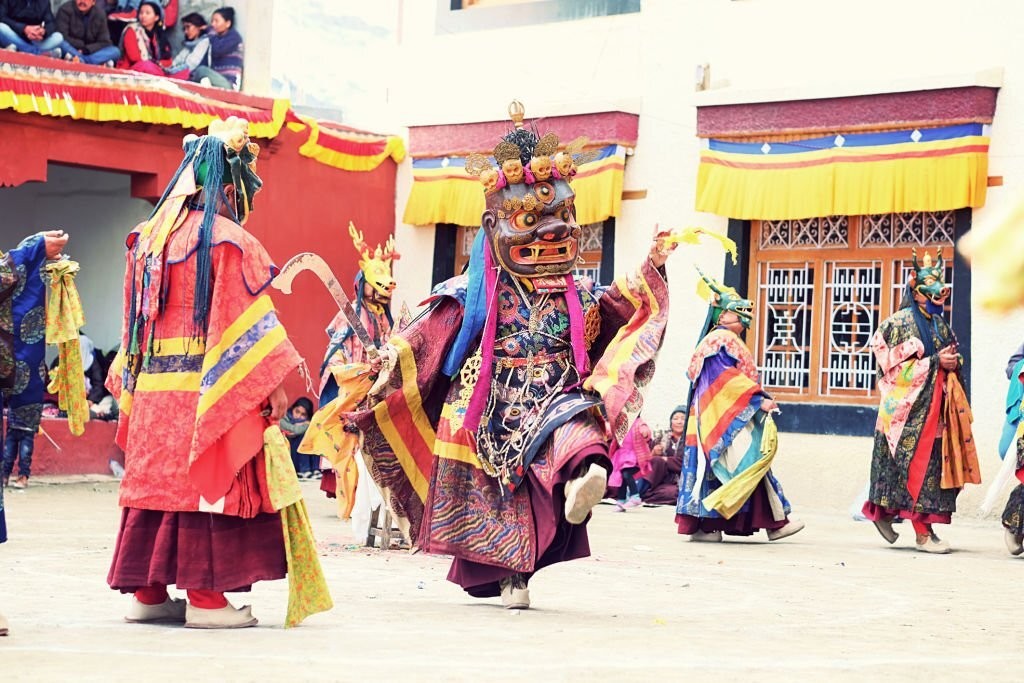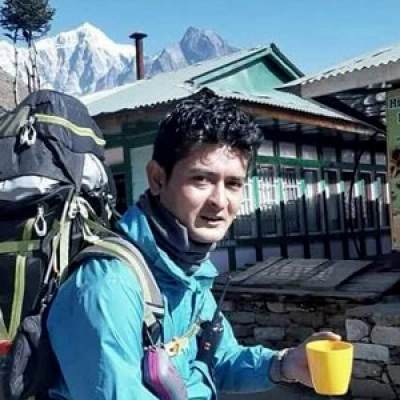Festivals are celebrated to remind us of the beauty of life. It teaches us to live life to the fullest forgetting all pains and sorrows. Tiji Festival is one of the annually celebrated festivals in the Upper Mustang Region during the month of May for 3 days. "Tiji" is the short form for "Tenchi." Both of which are abbreviations for “Tenpa Chirim”, which means “prayer for world peace”. It is believed that celebrating Tiji brings peace and prosperity to the people in Upper Mustang. The festival is expected to have started around 300 years ago as a symbol of the victory of good over evil.
Tiji Festival in Upper Mustang
Story Behind the Tiji Festival
It is believed that Mustang was once in great trouble and was getting destroyed by a monster named Ma Tam Ru Ta, who fed on humans and cause storms and droughts. To combat, A hero named Dorje Jono stepped out and defeated the monster following the instructions given by the Buddhist master Padmasabhava. After this, the people of Upper Mustang started celebrating the festival to honor Dorje Jono, a god in Vajrayana Buddhism and said to be the reincarnation of Lord Buddha. Dorje Jono had other names like Dorje Phurba and Vajrakila or Vajrakumar. Hence, the ritual was named after him Vajrakila.
During the celebration, the monks of Lo Manthang's "Choedhe" monastery perform ritual dances. During the performances, the persecution of Ma Tam Ru Ta (on the first day, in a dance called "Tsa Chham"), the birth of Dorje Jono (on the second day, in a dance called "Nga Chham"), and the endeavor to return the demon to Lord Buddha's realm (on the third and final day) are portrayed.
Celebration of Tiji Festival
A lengthy ritual of prayer chants and spectacular masked dances are performed during the celebration which mimics Dorje Jono's ancient fight with evil spirits. Before the big event, the primary dancer (Tsowo) goes on a three-month retreat. Descendants of the Mustang royal family along with all villagers from Upper Mustang's seven regions take part in this traditional dance, which is followed by several ceremonies. Tiji (or Tenchi) is a portion of the meditation practice centered on the Tantra text relating to Vajra Kumar (Vajra Kila) in the Mustangi (Lobo) tongue.

Prior to the meditation, there are two types of activities: first, calm dancing steps, and afterward the submission of negative energies, expressed in the second stage of the performance. The dancing ritual has three primary stages. There are 15 steps in the dance's preliminary section. The 'creation of the celestial palace' and 'production of deities' are then presented in two steps in the main portion. Finally, there are measures to remove everlasting and destructive perspectives and provide good fortune. Different positions and gestures represent different meditation processes in symbolic ways, and each of the dancing movements has deeper meanings. Seeing these steps is thought to take away obstacles from life.
Tiji festival is celebrated for three consecutive days, each of which has its own significance:
- First Day:
The Tiji Festival begins at noon on the first day. Throughout the day, the locals prepare for the occasion. The event begins with mighty sounds from Tibetan horns, Dhungchen, double-reeled horns, drums, and cymbals.
The event starts at the monastery, where local monks and performers are present. The monks proceed to the square and take a seat beneath the enormous Thangka painting that hangs on the square's southern wall. Then masked dance "Tsa Chaam" begins. This masked dance symbolizes Dorje Jono's triumph over evil.

- Second Day:
The monks perform the "Nga Cham" dance on the second day of the festival. The story of Dorje Jono, who attempted to restore the demon to the Buddha realm, is told on the second day. Female performers dressed in traditional clothes and jewelry make their way to the main square for the show. The principal ritual that demonstrates the generation of celestial palaces and gods is performed on the second day.
- Final Day:
The third or the final day of the performance begins with ceremonial music and is followed by the masked dance "Rha Chaam." This dance has a lively pace, and the dance itself emphasizes the defeat of evil.
As part of the closing ceremony, all of the performers appear, and the area fills with more music, dance, and shooting firearms. Dorje Jojo is performed by a monk who throws a statue made up of barley representing the demon "Ma Tam Ru Ta." Mustang now enjoys peace and prosperity with the defeat of this demon.
Tiji festival is held every year with the intention of establishing peace throughout the world. As it is a lunar festival, the dates vary from year to year and the date is fixed according to the Tibetan Lunar calendar. Tiji Festival is a dynamic and colorful event that honors Mustang's rich cultural heritage. It is an event immersed in symbolism and tradition. It is a moment for people from all over to get together to celebrate life, community, and culture.



